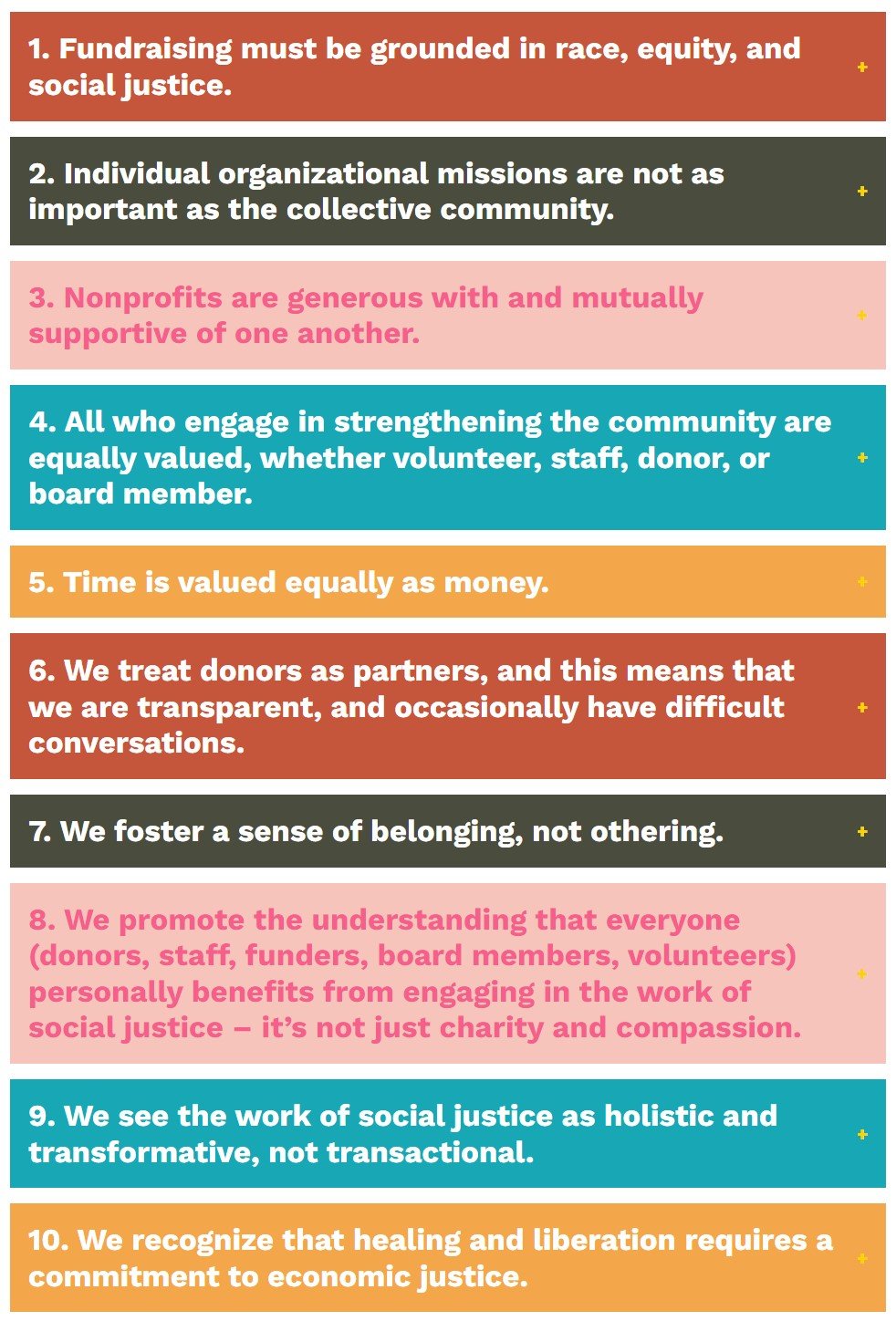Community-centric fundraising: Break free from the scarcity mindset
By Aperio staff
In the first quarter of 2022 alone, nonprofits contributed $1.4 trillion to the U.S. economy. But this does not mean nonprofits should operate as a trillion-dollar industry. Instead, we can understand this sum as the collective investment communities across America continue to make to advance social justice.
As successful fundraisers know, fundraising doesn’t simply begin with asking for money. It starts with understanding how philanthropy advances social equity and why people are motivated to contribute their time, treasure, or talent to certain organizations. They know that fundamental social change happens when people come together to create solutions to injustice.
Yet, we often talk about donor funding as though it were a commodity—and one that should be jealously guarded rather than generously shared among like-minded organizations. We have been trained to believe that we must raise as much money as possible for our individual organizations.
Community-centric fundraising promotes a different perspective: that communities are best served when nonprofits see themselves as part of a larger ecosystem working collectively to build a just society. Proponents of community-centric fundraising understand that fundraising is not a transactional exchange. Instead, the work of nonprofits must be holistic in advancing social justice.
What is community-centric fundraising?
Communities working for social justice need tools to create and sustain healthy organizations. To support these organizations, community-centric fundraising (CCF) was developed to offer an alternative vision for equitable fundraising, community organizing, and organizational development. Composed of 10 core principles grounded in racial and economic justice, CCF is specifically designed to advance social justice within the nonprofit sphere.
Source: communitycentricfundraising.org
These 10 principles are not meant to be prescriptive, but rather a “starting point.” Let’s start out of order by exploring the second principle of CCF: “Individual missions are not as important as the collective community.” This principle provides a solution of sorts to the commodification of philanthropy.
The second principle
The second principle suggests that fundraisers must prioritize the entire community of beneficiaries over individual organizations. In doing so, organizations will develop mutually beneficial senses of belonging and interdependence that collectively further their mission. As participants in the nonprofit industry, we must view our work holistically.
All too often fundraisers think of (and even refer to) similar organizations as ‘competition.’ How can we possibly view fellow collaborators in the pursuit of a just and equitable world as competition? What would it look like if we instead viewed them as colleagues, or even comrades pursuing equity?
Nonprofit organizer and direct fundraiser Vu Le, first described this dynamic in an influential 2015 blog post titled “Winter is coming and the donor-centric fundraising model must evolve.” In this article, Le lays the foundation for the principles of community-centric fundraising. He emphasizes the mixed priorities embedded within the model of donor-centric fundraising, suggesting instead that nonprofits should center the ‘we’ of nonprofits, donors, and communities served.
His subsequent posts: How donor-centrism perpetuates inequity and the 9 Principles of Community-Centric Fundraising, served as inspiration for a Seattle-based group of fundraisers to formally create a chapter of community-centric fundraising. By 2019, it was clear that the principles of CCF were not only broadly applicable but also desperately needed across America. So, led by the founder of the Community-Centric Fundraising Committee, Andrea Arenas, the Seattle chapter expanded nationwide.
Reevaluating the donor-centric model
Community-centric fundraising was also developed as an alternative to the widespread popularity of the donor-centric model within the nonprofit industry. This model often directly contradicts the second principle of CCF.
By overemphasizing donor experiences, traditional fundraising methods inadvertently uphold the very structures of oppression that nonprofits seek to deconstruct. Donor-centrism promotes in-depth consideration of individual donors’ motivations and interests. Proponents of CCF agree: Organizations gain more long-lasting support from existing donors by treating them as whole people who have a number of gifts to offer in addition to financial support.
However, the donor-centric approach over-emphasizes donor engagement, often reinforcing the marginalization of the very communities nonprofits exist to serve. Rather than understanding that communities are best served when organizations see themselves as a part of a broader push towards equity, a donor-centric organization might prioritize a project for the sake of a single donor over the interrelated visions for addressing root causes of injustice.
Making the shift
As interest in philanthropic participation continues to soar at unprecedented rates, community-centric fundraising has never been so vital. A 2019 report by the Center for Civil Society at Johns Hopkins University found that nonprofits account for nearly one in ten jobs within the private workforce in the U.S. This means nonprofit organizations are a far more substantial economic force than is commonly understood, with broad social reach and growing financial power.
Within this landscape, community-centric fundraising offers a promise that fundraising can and must holistically prioritize the needs of the community, rather than those of individual stakeholders. The field should reclaim fundraising by supporting liberatory practices that disrupt the attitudes and policies that first gave rise to inequity.
How do we make this shift to community-centric fundraising? To start, giving officers, grantmakers, and even entire organizations must analyze the inputs and outputs of their philanthropic efforts. They must ask themselves, with the goal of justice in mind, if their organization is driving systemic change.
Individual nonprofits and philanthropic efforts often engage in siloed causes, rather than integrated efforts toward transformative change. Well-implemented programs can make an impact, but without embracing a community of like-minded organizations, they are unable to drive systemic change.
By adopting a community-centric framework, nonprofits will dismantle inequalities for communities served by acting in a coordinated manner to advance justice. By moving away from a scarcity mindset and adopting a vision of open collaboration, nonprofits can do more than merely avoid mission creep. They can advance transformative justice.


